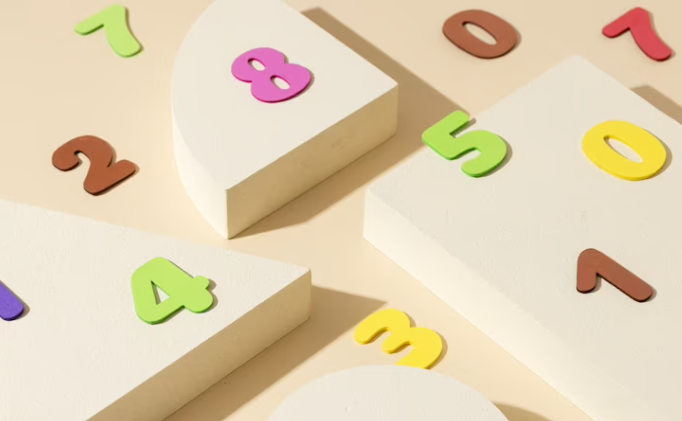Understanding numerical representations is crucial in mathematics and various real-life applications. One common way of representing numbers is through “standard form.” Scientific notation relies heavily on the standard form. It’s used in mathematics and science to express values succinctly, making calculations and comparisons manageable.
The standard form of numbers is an invaluable tool for expressing large and small numbers concisely. Its representation simplifies complex calculations and aids comprehension in various fields.
Whether dealing with astronomical distances or atomic masses, standard form proves its significance. Mastery of this notation empowers individuals to navigate numeric complexities efficiently.
In this article, we will delve into the concept of standard form, its definition, how to write numbers in the standard form, expanding numbers from standard form, real-life applications, and some examples.
Definition:
The general form of a number in standard form is:
P x 10q where 1 ≤ P < 10 and q Є Z (a positive or negative integer) that is the exponent of 10.
This form simplifies calculations and representation of numbers that may involve extensive digits. So, the standard form of a number comprises the product of two factors:
- A decimal number greater than or equal to 1 and less than 10 (the coefficient).
- 2. A power of 10 (the exponent).
Steps to Write Ordinary Numbers into Standard Form:
Any number can be converted into standard form by following the conversion steps outlined in the following.
- Identify the Coefficient: Write down the significant digits of the original number. This forms the coefficient (a).
- Determine the Exponent: Find out the exponent of 10 that is required to bring the coefficient back to the original number. The exponent of 10 will be a positive integer if the decimal point is shifted to the left. The exponent of 10 will be a negative integer if the decimal point is shifted to the right.
- Write the Standard Form: Write the coefficient followed by “x 10^” and then the exponent. For example, if you moved the decimal point 4 places to the right and the significant digits were 1.23, the standard form would be 1.23 x 10^-4
If you are looking for a calculator that can help you find the standard deviation of your given input, you may want to try the Standard Deviation Calculator.
Applications of the Standard Form of Numbers:
The standard form finds its applications and utility in various scientific and everyday scenarios, such as:
Science and Engineering:
Standard form is widely used in scientific research and engineering to express very large or very small measurements, such as the size of atoms or the distance between celestial objects.
It simplifies expressing incredibly large or small measurements, like the distance between planets or the size of atoms. Engineers use the standard form to represent measurements in electronics, physics, and other disciplines.
Astronomy:
When dealing with astronomical distances, masses, and other quantities, standard form simplifies the representation of such large numbers. Expressing astronomical distances and sizes of celestial bodies.
Financial Notation:
In finance, the standard form can be used to express large amounts of money in a concise way, such as the national debt or company revenues.
Technology:
Computer science and electronics often deal with very large and very small numbers, making standard form useful for expressing data sizes, computing power, and other metrics. Indicating data storage capacities and processing speeds.
Economics:
In economics, the standard form is employed to represent large numbers in financial reports and statements. Representing GDP figures, national debts, and market values.
Chemistry:
Standard form is used to represent the masses of atoms and molecules, especially in chemical equations. Describing extremely large or small atomic masses and quantities.
Education:
Standard form is taught in schools as part of mathematics education to help students understand and work with numbers of varying magnitudes.
Scientific Notation in Calculators:
Many scientific and graphing calculators use standard forms to display and manipulate numbers, which is especially helpful for complex calculations.
How to write numbers in standard form?
Example 1:
Express the number 9 461 000 000 000 000 in standard form.
Solution:
Step 1: The non-zero digits (94) make up the coefficient, which we are able to determine.
Step 2: The decimal point will be located after the first non-zero number, like 9.4.
Step 3: Determine the number of digits after 9. There are 15 digits to which the decimal point has crossed to come in the standard position. This will be the exponent of 10 i.e. 1015.
Step 4: So, the given number in standard form will be expressed as 9.461 x 1015.
You can cross-check the results with the help of online tools like the standard form calculator by MeraCalculator to get accurate results.
Example 2:
Express the number 0.000 000 000 000 000 000 000 000 001 673 in standard form.
Solution:
Step 1: We identify the coefficient i.e. the non-zero digits (16) will form the coefficient.
Step 2: Place the decimal point after the first non-zero digit i.e. 1.6
Step 3: We count the number of digits before 8. There are 27 digits to which the decimal point has crossed to come in standard position from left to right. This will be the exponent of 10 i.e. 10-27.
Step 4: So, the given number standard form will be expressed as 1.6 x 10-27.
Summary:
We can summarize the whole blog as the standard form is a versatile notation that simplifies the representation of extremely large or small numbers. In this blog, we have elaborated on the concept of the standard form of numbers. We have elaborated on its definition, important steps to write an ordinary number into the standard form of numbers, and significant applications, and we provided some examples.

